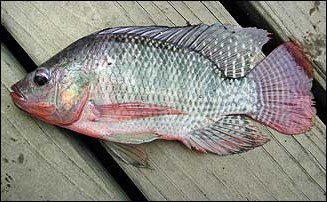- Home
- About S&T
- Taxa/Organisms
- Ecosystems
- Issues
- Methods & Tools
- Reports & Publications
- Location
- Search
2008 | Publisher: USGS | Format: URL
soundwaves.usgs.gov — U.S. Geological Survey (USGS)'s Western Region held an internal USGS workshop on Sea-Level-Rise Impacts on November 6-7, 2007, in Menlo Park, California. The meeting was attended by 30 scientists from four USGS disciplines (geology, geography, biology, and water) and 13 different science centers in the Western Region. In part a follow-up to the More...

Publisher: USGS | Science Center: Florida Integrated Science Center (FISC, Gainesville) | Format: URL
fl.biology.usgs.gov — The Nile tilapia (Oreochromis niloticus) is commonly used in aquaculture worldwide. Feral populations exist in many regions where individuals escape culture and establish in natural habitats. In Mississippi, Nile tilapia are established in at least three distinct localities (fig. 1): the lower Pascagoula and Escatawpa river drainages, and a More...

Publisher: USGS | Science Center: Contaminant Biology | Format: URL
biology.usgs.gov — This web page lists databases related to contaminant research across government agencies and partnerships. Many of the links include access to documented trends in the occurrence of persistent toxic chemicals that may threaten fish and wildlife resources, summaries of the results from aquatic acute toxicity tests, Avian Incident Monitoring, More...

Publisher: USGS | Science Center: Biological Informatics | Format: URL
biology.usgs.gov — This page presents samples of genetics and genomics research from the USGS Biological Resources Discipline about the conservation genetics of fish.

Publisher: USGS | Science Center: Western Fisheries Research Center (WFRC, Seattle) | Format: URL
wfrc.usgs.gov — There are approximately 500,000 abandoned mines in the western US. Collectively, these mines pollute rivers, streams, and western reservoirs with millions of tons of metals annually that degrade aquatic habitat and water used by humans for drinking, recreation, and irrigation. However, there is great potential in decreasing or eliminating the flow More...
